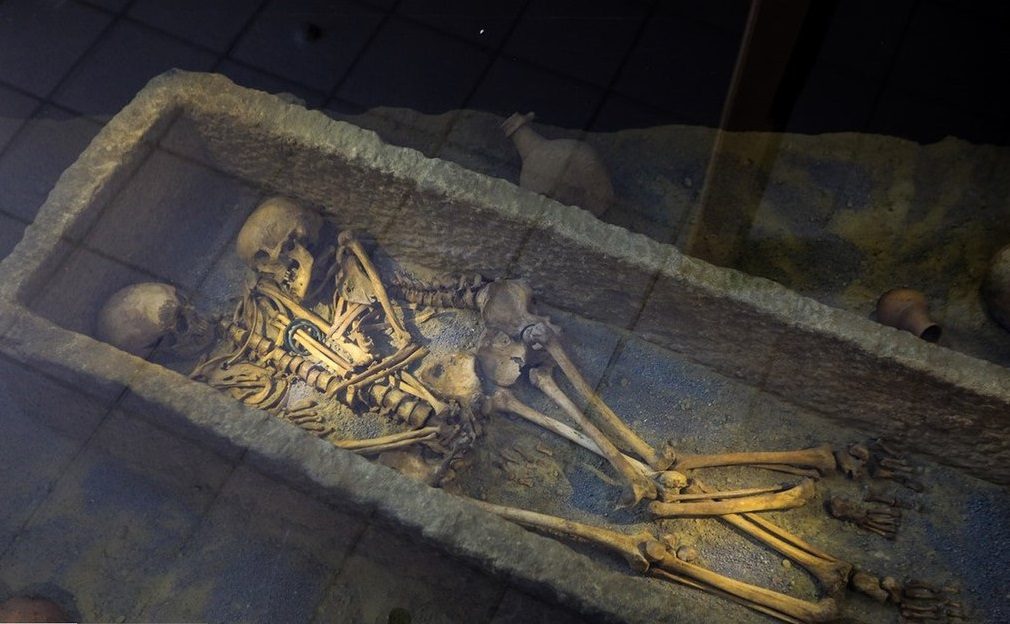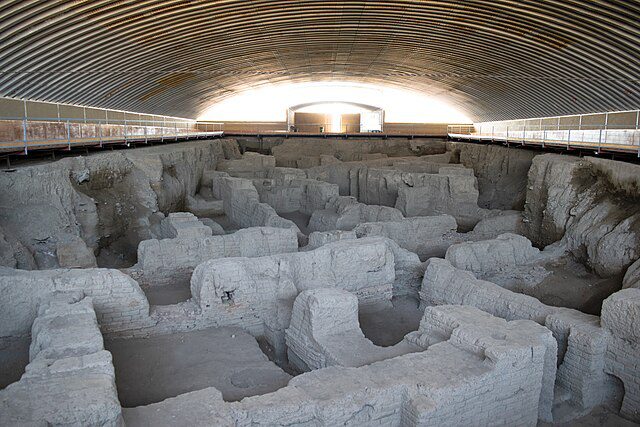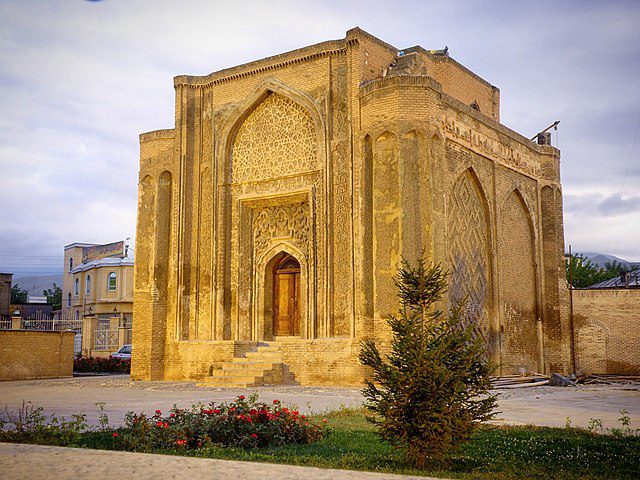Table of Contents
Ecbatana, also known as Hagmatāna or Haŋmatāna, holds a significant place in history as the ancient capital of Medes in western Iran. This historic city later became a prominent center in the Persian, Seleucid, and Parthian empires. Its strategic location, architectural marvels, and abundant resources made it a flourishing hub throughout the centuries.
In this article, we will delve into the captivating history of this city, explore its remarkable architecture, and uncover the treasures it once held. Join us on this journey back in time to discover the wonders of this ancient city.
The Rise of Ecbatana
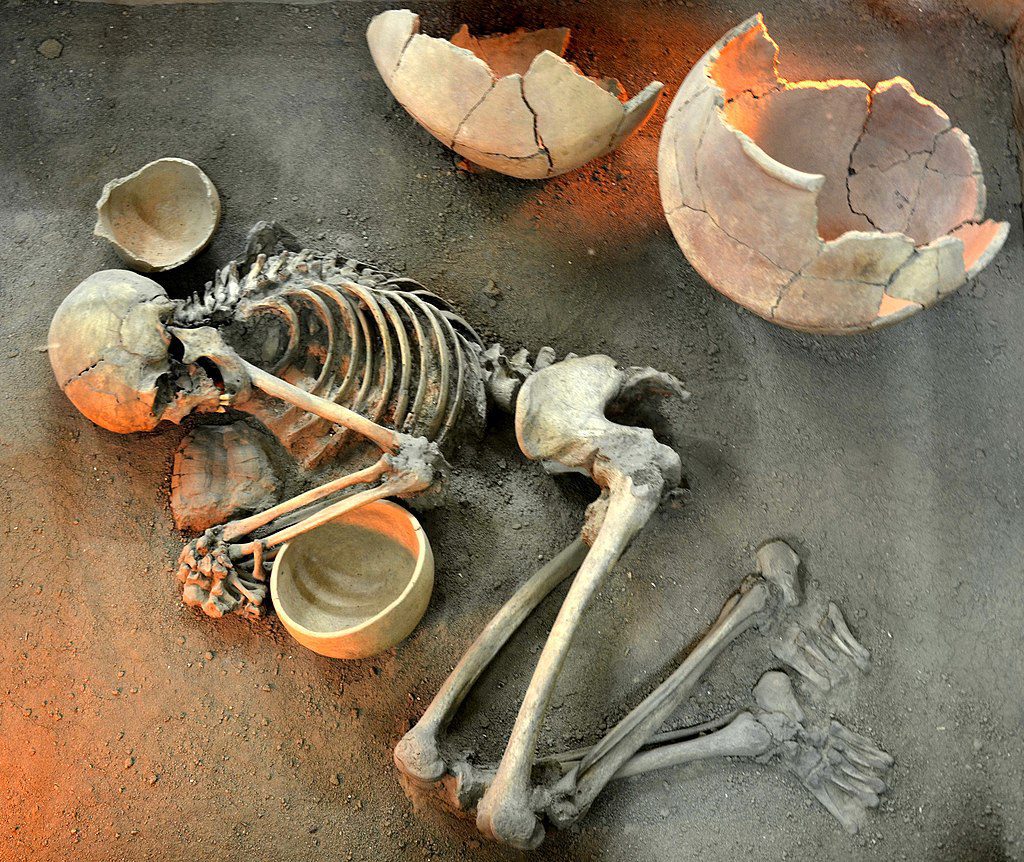
Ecbatana’s prominence dates back to before the 1st millennium B.C.E. The city was chosen as the capital of the Medes in 678 BC by Deioces, the first ruler of the Medes. Deioces aimed to create a majestic palace befitting the dignity of a king. Although the Neo-Assyrians did not extensively document this city, it was undoubtedly a thriving city during the Median era.
Ecbatana Location
Ecbatana city has a really interesting history. First, the Persian king Cyrus the Great took it from the Median ruler Astyages in 550 BCE. Then, in 330 BCE, Alexander the Great grabbed it from the last Achaemenian ruler. Nowadays, part of the old city is in the modern city of Hamadān, but nobody has ever dug around there.
If you want to consider Ecbatana reconstruction, it tucked in today’s Hamadan has a cool story. It got passed around between powerful leaders in the past, but no one has ever gone digging to see what’s hidden in the ground. The city’s old tales are like a quiet song waiting for someone to listen and discover the ancient stories buried underneath.
The Achaemenid Influence
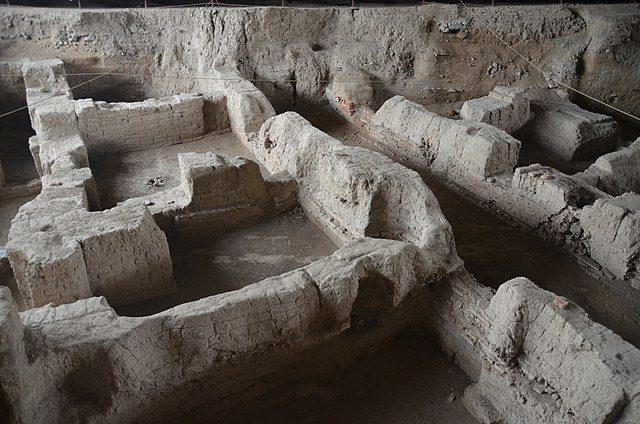
In 550 B.C.E., Ecbatana was conquered by Cyrus II, the founder of the Achaemenid Persian Empire. The city’s treasury was subsequently transferred to Anshan. Situated at the foot of Mount Alvand, the city became a summer royal residence and a treasury until 330 BC. The city also served as a royal archive, as evidenced by the discovery of Cyrus’s order for the reconstruction of the Jerusalem temple.
Ecbatana under Parthian Rule
Later in history, Ecbatana city became the capital of the Parthian kings. It served as a summer residence, while Ctesiphon was used as the winter residence. The city’s importance in the Persian Empire can be attributed to its location along the High Road, a vital east–west highway. The city had a reputation for its abundance of horses, wheat, and various minerals.
Alexander and the Persian Treasury
In 330 B.C.E., Alexander captured the Persian treasury at Ancient Ecbatana, looting its gold and silver decorations. It was also there that the Macedonian general Parmenion was assassinated. The city witnessed significant events during Alexander’s conquests, showcasing its historical significance.
Later Rulers and the Fall of Ecbatana
Throughout the following centuries, Ecbatana Palace changed hands several times. It was ruled by Seleucus I, and Mithridates I, and later fell to Ardashir I and the Muslim forces in 642 CE. The city faced destruction during the Mongol invasion in 1220 and was sacked by Timur in 1386, resulting in a devastating loss of life.
Historical Descriptions
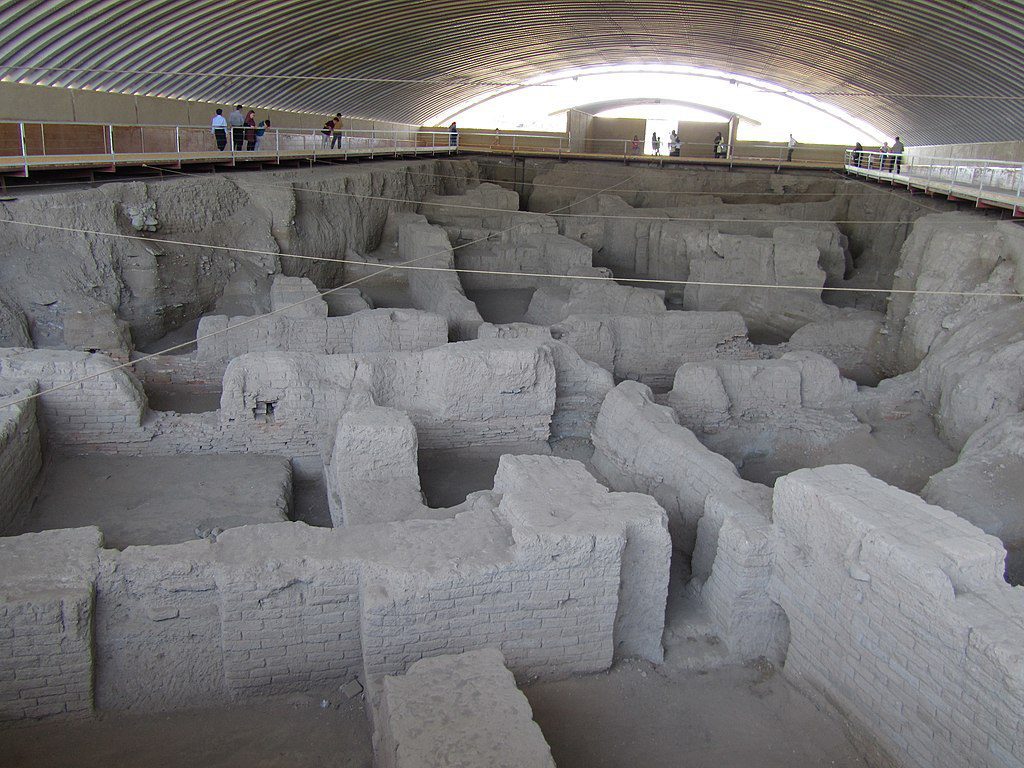
Various ancient authors and historians provide captivating descriptions of ancient Ecbatana. Herodotus, a renowned Greek historian, described the city’s impressive walls rising in circles, with different-colored battlements representing each level. The royal palace and treasuries stood within the innermost circle. These details align with stone reliefs from the Neo-Assyrian Empire, depicting Median citadels enclosed by concentric walls.
Polybius, a Greek historian from the 2nd century BC, emphasized the wealth and magnificence of its buildings. He marveled at the gilded columns, silver or gold-plated rafters, and exquisite ceiling compartments. Although much of the precious metals were looted during various conquests, the remnants spoke volumes about the city’s grandeur.
Archaeological Insights
Archaeological excavations and research shed light on the ancient city of Ecbatana. The Mosalla, a rock hill in the southeast sector, contains remnants of a rectangular citadel believed to date back to the Parthian era. The Tell Hagmatana, also known as Tappe-ye Hagmatāna, is a 1.4-kilometer circumference mound that likely corresponds to the ancient citadel of there. Excavations have uncovered defensive walls, column bases from the Achaemenid period, and Parthian-era constructions.
Although excavation efforts have been limited due to the modern town covering much of the ancient site, ongoing research continues to provide valuable insights into Ecbatana’s historical significance. The discovery of ancient artifacts, including glazed bricks, faience tiles, and sculpted heads, contributes to our understanding of the city’s architecture and culture.
How to Get to Ecbatana
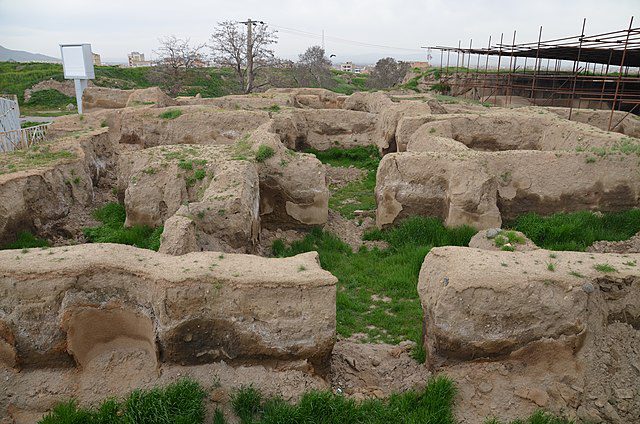
If you’re eager to explore the ancient wonders of Ecbatana city, making your way to this historic site in modern-day Iran can be an exciting journey. While the city is an archaeological site and no longer a bustling city, its location in the province of Hamadan offers access to the remnants of this once-great capital. Here are some tips on how to reach there and embark on your adventure into the past.
Arriving by Air
The closest international airport to Ecbatana is Tehran Imam Khomeini International Airport, located in the capital city of Iran. From there, you can take a domestic flight to Hamadan Airport, which is the nearest airport to this city. Several airlines operate flights between Tehran and Hamadan, offering convenient options for travelers. Once you arrive at Hamadan Airport, you can proceed with ground transportation to reach Ecbatana.
Traveling by Train
Another option for reaching Ecbatana is by train. Iran has an extensive railway network, and Hamadan is well-connected to major cities such as Tehran, Isfahan, and Tabriz. You can take a train to Hamadan Railway Station, and from there, continue your journey to Ecbatana by hiring a taxi or using local transportation services.
Road Trip
For those who enjoy the freedom of the open road, a road trip to Ecbatana can be a memorable experience. The city of Hamadan is accessible by well-maintained highways, making it convenient to reach by car. If you’re already in Iran, you can plan your route to Hamadan and enjoy the scenic drive through picturesque landscapes. Car rental services are available in major cities, offering flexibility and convenience for travelers.
Local Transportation
Once you have arrived in Hamadan, the final leg of your journey to Ecbatana can be accomplished using local transportation options. Taxis are readily available in Hamadan, and you can hire one to take you to the archaeological site of Ecbatana. Alternatively, you can use public buses or hire a local tour guide who can provide transportation services and valuable insights into the history and significance of the area.
Exploring Ecbatana
Upon reaching Ecbatana, you will be greeted by the awe-inspiring remnants of this ancient city. It is important to note that the archaeological site is now a historical park, and proper respect for the preservation of the site is expected. Remember to follow any guidelines or instructions provided by the authorities to ensure the preservation of Ecbatana’s heritage.
As you wander through the ruins, take the time to absorb the rich history and immerse yourself in the grandeur that once characterized this magnificent city. The remains of palaces, walls, and other structures will transport you back in time, allowing you to envision the lives of the people who once called Ecbatana home.
Recommended Sightseeing Time of Ecbatana
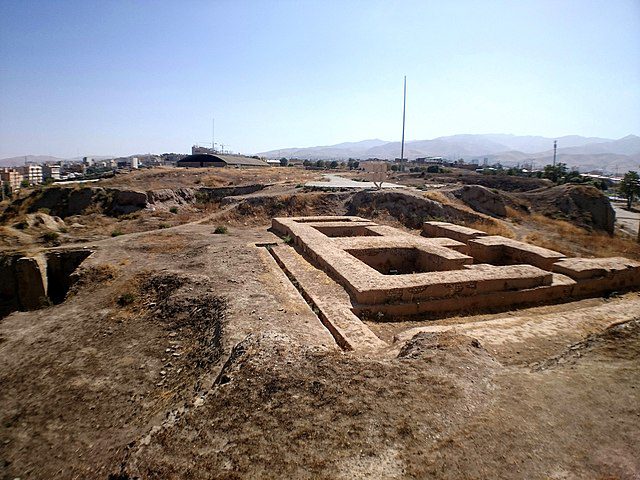
If you’re planning a trip to Ecbatana, the historical city of Hamedan, go for Spring or Summer. The weather is just right during these times, making it easy to explore the city’s history and culture. Avoid the cold and snowy Winter months, and instead, choose the warmer seasons for a more pleasant experience.
For an extra special visit, come between early August and mid-September. During this time, Hamedan turned into a lively hub with handicraft and herbs exhibitions. It’s like a big celebration where you can enjoy the city’s traditions and modern festivities. This period adds a burst of color and excitement to your Ecbatana adventure.
Working Hours of Ecbatana
Step into Ecbatana’s time-blended enchantment, welcoming you every day except on a few public holidays. The visit hours sway with the seasons, offering a front-row seat to the city’s charm. During the lively Spring and Summer, from 9 a.m. to 8 p.m., Ecbatana bathes in extended daylight, creating a perfect setting for exploration. Imagine wandering through its ancient marvels as the sunlight paints them in shades of gold.
As the Fall and Winter take center stage, Ecbatana wraps itself in a different kind of allure. The visit hours, a bit shorter but just as sweet, run from 9 a.m. to 6 p.m. Experience the city’s transformation, where history whispers in the air, and each cobblestone comes to life with the changing seasons. In the shorter days, Ecbatana unveils a different kind of beauty, a soothing melody echoing through its historical veins.
Where to Eat Near Ecbatana
If you find yourself exploring the historical wonders of Ecbatana, your culinary journey is in for a treat with a variety of dining options in the vicinity. Embark on a gastronomic adventure with a visit to Ordibehesht Restaurant, where local flavors blend seamlessly with a welcoming ambiance. For those seeking a taste of tradition, Aryaeiyan Traditional Restaurant offers a menu steeped in cultural richness, providing a unique dining experience that mirrors the heritage of the region.
For a different culinary escapade, venture to Shandiz Haji Restaurant, where the fusion of flavors promises a delightful feast for your taste buds. Alternatively, Shandiz Restaurant presents another inviting option, beckoning patrons with its culinary expertise and a menu that caters to diverse palates. Whichever eatery you choose, these dining establishments near Hegmataneh not only satisfy your appetite but also serve as gateways to the local culture through the language of food.
Where to Stay Near Ecbatana
When planning a visit to Ecbatana, finding suitable accommodation near the archaeological site will ensure a comfortable and convenient stay. While Ecbatana itself is an ancient city with no modern hotels or accommodations, the nearby city of Hamadan offers a range of options to suit various preferences and budgets. Here are some suggestions for places to stay when exploring Ecbatana and its surroundings.
Hotels in Hamadan
Hamadan, located in the vicinity of Ecbatana, provides numerous hotel options for visitors. The city offers a range of accommodations, from budget-friendly hotels to upscale establishments. Here, you can find both international chain hotels and locally-owned boutique hotels, each providing its unique charm and amenities. Staying in Hamadan allows you to easily access Ecbatana and explore other attractions in the area.
Guesthouses and Bed & Breakfasts
For a more authentic and personalized experience, consider staying in a guesthouse or bed & breakfast in Hamadan. These accommodations often offer a cozy and welcoming atmosphere, providing an opportunity to interact with local hosts and learn more about the region’s culture and traditions. Guesthouses and B&Bs can be found in different parts of Hamadan, offering a comfortable stay while being near the city.
Boutique and Traditional Hotels
Hamadan is known for its boutique and traditional hotels, which provide a unique glimpse into the local architecture and heritage. These hotels often feature traditional Persian designs and offer a blend of modern amenities and cultural elements. Staying in a boutique or traditional hotel can enhance your overall experience, immersing you in the rich cultural ambiance of the region.
Accommodations in Surrounding Areas
If you prefer a quieter and more serene setting, you may consider staying in accommodations located in the surrounding areas of Hamadan. The picturesque landscapes and tranquil surroundings create a peaceful retreat away from the bustling city center. You can find hotels, guesthouses, and eco-lodges nestled amidst the beautiful countryside, allowing you to enjoy the natural beauty while being within a reasonable distance from the city.
Booking and Planning
To ensure a smooth and hassle-free stay, it is advisable to book your accommodation in advance, especially during peak travel seasons. Online travel platforms, such as hotel booking websites or travel agencies, provide a convenient way to explore different options, compare prices, and secure your preferred accommodation. Additionally, reading reviews from previous guests can offer insights into the quality of service and overall experience.
Here are some examples of hotels and accommodations in and around Hamadan that you can consider for your stay near:
- Parsian BuAli Hotel: This is a well-known 4-star hotel located in the heart of Hamadan, offering comfortable rooms, modern amenities, and convenient access to the city’s attractions.
- Eram Hotel: Situated in the center of Hamadan, Eram Hotel provides cozy rooms, friendly service, and a pleasant atmosphere for guests.
- Baba Taher Hotel: A boutique hotel named after the famous Persian poet, Baba Taher, offering a unique cultural experience with its traditional decor and warm hospitality.
- Hamadan Traditional Hotel: This charming hotel showcases traditional Persian architecture and design, providing guests with a glimpse of the region’s rich heritage.
- Laleh Hotel: A budget-friendly option located near the city center, Laleh Hotel offers comfortable accommodations and easy access to local amenities.
- Alvand Hotel: Situated in a serene location on the outskirts of Hamadan, Alvand Hotel offers a tranquil setting, beautiful views, and comfortable rooms.
- Hamedan Aria Hotel: A newly built hotel offering modern amenities, stylish rooms, and a convenient location for exploring Hamadan and its attractions.
Other Attractions Near Ecbatana
Embark on a journey through the enchanting city of Hamedan, where cultural wonders await your exploration.
Tomb of Esther and Mordechai
Head to the Tomb of Esther and Mordechai, a special place for Iranian Jews and an interesting stop for everyone else. This spot isn’t just about religion; it’s a place that tells stories of strength and togetherness.
Alaviyan Dome
Step into history with a visit to the Alaviyan Dome, showcasing the beautiful architecture of the Islamic period. Marvel at the detailed design that takes you back in time. As you wander through the dome’s halls, you’ll hear tales of skilled builders and creative minds.
Baba Taher Mausoleum
For a taste of poetry, visit the Baba Taher Mausoleum, where the verses of Persian Sufi poetry come to life. Let the rhythmic words of Baba Taher, a respected poet, guide you through the artistic and spiritual side of Persian culture. Continue your adventure by honoring Avicenna at his mausoleum. Here, you’ll discover the impact of this brilliant thinker on the world of medicine. Stand in awe of Avicenna’s achievements, and experience the blend of history, spirituality, and knowledge in this captivating corner of Hamedan.
FAQs About Ecbatana
Q1. What is the historical significance of Ecbatana?
A1. Ecbatana holds historical significance as the ancient capital of Medes in western Iran and later as a prominent center in the Persian, Seleucid, and Parthian empires. Its strategic location, architectural marvels, and abundant resources contributed to its flourishing throughout the centuries.
Q2. Who chose Ecbatana as the capital of the Medes?
A2. Ecbatana was chosen as the capital of the Medes by Deioces, the first ruler of the Medes, in 678 BC.
Q3. Which empire conquered Ecbatana in 550 B.C.E.?
A3. Ecbatana was conquered by Cyrus II, the founder of the Achaemenid Persian Empire, in 550 B.C.E.
Q4. How did Alexander the Great contribute to the history of Ecbatana?
A4. In 330 B.C.E., Alexander captured the Persian treasury at Ecbatana, looting its gold and silver decorations. The city also witnessed significant events during Alexander’s conquests, further solidifying its historical significance.
Q5. What are the transportation options to reach Ecbatana?
A5. To reach there, you can consider arriving by air at Tehran Imam Khomeini International Airport and then taking a domestic flight to Hamadan Airport, the nearest airport to this city. Another option is to travel by train to Hamadan Railway Station, which is well-connected to major cities in Iran. Additionally, a road trip to Hamadan is possible, as the city is accessible by well-maintained highways.
Q6: Where is Ecbatana in the Bible?
A6: It was an old city in what is now Hamadān, Iran. It used to be the main city of Media and later became a summer home for the Achaemenian kings and one of the places where the Parthian kings lived.
Q7: What happened to Ecbatana?
A7: Afterwards, in 305 BC, Seleucus I governed the city, and in 147 BC, it was under the rule of Mithridates I. In 226 CE, Ardashir I took control, followed by the Muslims in 642 CE. The city faced destruction in 1220 due to the Mongol invasion and was attacked in 1386 by Timur, leading to a massacre of the population.
Q8: How old is Ecbatana?
A8: The history of this ancient super-city dates back over 3000 years. Ecbatana served as the initial capital of the first Aryan empire in 708 BC, known as the Medes Empire with the Diako kingdom. It also served as the summer capital of the Achaemenid Empire.
Q9: What is the meaning of Ecbatana?
A9: Ecbatana is an old city in Iran, located where modern Hamadan now stands. It was the capital of Media and a royal residence for both the Persians and Parthians.
Q10: What is Ecbatana called today?
A10: Deioces brought together all the Median tribes, established Ecbatana (now Hamadan, Iran) as their capital, and governed for 53 years from 728 to 675 BC.
Last Words: Experience the Best of Ecbatana with a Customized Tour
Ecbatana, the ancient city of gathering, played a pivotal role throughout the history of the region. From its origins as the capital of Media to its prominence under various empires, Ecbatana was a testament to the grandeur of ancient civilization. Its remarkable architecture, including the concentric walls and magnificent palaces, showcased the wealth and power of its rulers.
To truly immerse yourself in the rich history, captivating culture, and breathtaking landscapes, it’s advisable to opt for Customised tours that cater specifically to your preferences. With To Iran Tour, you are not just a traveler; you are the architect of your adventure. Ecbatana, with its ancient allure and modern charm, becomes your canvas, waiting to be painted with the strokes of your preferences.
Discover Ecbatana, and all of Iran, with To Iran Tour—where your dreams of a personalized adventure come to life.

